andywg: That tilting and dumping design is the patented one, and is very difficult to build. And impossible to buy. That's why my bucket design came to be

rabbu:
The way I understand it is, that if you remove a Fudge, removal resins and/or skimmer or skim less, you need to up waterchanges to compensate. This algea removes Phosphate and Nitrate from what you are saying, but I remember someone saying it does not remove disolved organics in similar quantities to these other two chemicals
Turf does not remove organics, true. What it does is wait for the disolved organics to be decomposed by bacteria into N and P, which it does remove. You have to remember that there are thousands of skimmerless tanks that have been running for years with just algae to remove nutrients. It does not "crash". It stabilizes with more DOC's, but zero N and P, and allows food particles to be free-floating until they are consumed, or decomposed.
Waterchanges themselves aren't always used for Nitrate and Phosphate removal are they?
Of course not. That's why I say "IF the purpose is to reduce N and P". You can water change for any reason, like poisioning. But IF the reason is to reduce N and P, they won't be needed. I don't get into supplements; any reefer should be testing for the basics and handling it they way they want to.
Ok here are the results of the 5 gal nano test. First, here is the tank, which has 3 pounds LR, a SSB, along with a purple lobster, a starfish, and a clown:
The tank has been on an office worker's desk (his first tank), with no water changes for about four months. The last change was done only to get nitrate down (a result of overfeeding of course), in order to keep the animals happy. Phosphate was not a concern since there were no corals, and thus there was no phosphate removal system in place.
As you can see, the light and most of the hood were removed, as was the little sponge filter. The remaining part of the hood has a compartment for the sponge filter, which is 2 X 3 inches, and it has a little built in pump to move water across this compartment. I started out by taking some tank-divider material and cutting it to a tight fit into the compartment:
Then I sanded it very rough on the top, and I "seeded" it by taking some green hair algea and rubbing the algae HARD into the sanded side. Then I pushed the screen into the sponge filter compartment:
The screen is only 6 square inches, single sided, and thus not enough for this tank according to the rule of thumb of one square inch per gallon (double sided), or two square inches per gallon (single sided). Thus for this 5 gal tank single-sided I should have 10 square inches instead of 6, but of course for simplicity I just used the compartment size.
Since we had already removed the original tank light, we were going to just use the light for the screen as the new tank light too. So I just took one of the same bulbs that I used in the bucket, a 23 Watt, 5100K compact fluorescents "full-spectrum" (125W output equivalent):
http /www.buylighting.com/23-Watt-R40-Com...p1r4023-51k.htm
/www.buylighting.com/23-Watt-R40-Com...p1r4023-51k.htm
...and set it directly on the plastic hood, which put it only a half inch from the flowing water:
Thankfully these CFL's run very cool, and you can put your hand right on them without burning. Of course if you try this light placement yourself, you'd want to test it carefully so that you don't melt anything, and won't knock the bulb over. I thought that the light might heat up the water, but it does not seem to. The light is on an 18-hour-on timer, and provides the tank itself with much more light than the original hood light did.
Results: Here are the measurements (Salifert) and pics taken over a period of days:
....................N...........P
.
day 0..........*............*...............not measured
day 1........(50)........( .5 )
day 2..........*............*...............not measured
day 3..........*............*...............not measured
day 4..........*............*...............not measured
day 5........(50)........( .5 )
day 6........(25)........( .25 )
day 7........(15)........( .13 ).........screen full
day 8........(15)........(1.0)...........screen full
day 9........(10)........(1.0)...........whole screen cleaned (mistake)
day 10......(10)........(1.0)...........growing back
day 11......(8)..........(1.0)...........growing back more
day 12......(8)..........(1.0)...........half cleaned
day 13......(8)..........( .5 )
day 14......(5)..........( .25 ).........other half cleaned
day 15......(8)..........( .13 )
day 16......(3)..........( .13 ).........other half cleaned; housing cleaned
day 17......( 2.5 ).....( .05 )
day 18......( .5 ).......( .05 )
day 19......( .2 ).......( .05 ).........other half cleaned (not much there)
day 20......(0)..........( .015 ).......green growing back over brown
Day 2:
Hi Res:
http /www.radio-media.com/fish/5galNanoDay02screen.jpg
/www.radio-media.com/fish/5galNanoDay02screen.jpg
Day 3:
Hi Res:
http /www.radio-media.com/fish/5galNanoDay03screen.jpg
/www.radio-media.com/fish/5galNanoDay03screen.jpg
Day 7:
Hi Res:
http /www.radio-media.com/fish/5galNanoDay07screen.jpg
/www.radio-media.com/fish/5galNanoDay07screen.jpg
Day 9, before complete cleaning:
Hi Res:
http /www.radio-media.com/fish/5galNanoDa...reScrapeDay.jpg
/www.radio-media.com/fish/5galNanoDa...reScrapeDay.jpg
Day 9, After complete cleaning (mistake)
Hi Res:
http /www.radio-media.com/fish/5galNanoDa...AfterScrape.jpg
/www.radio-media.com/fish/5galNanoDa...AfterScrape.jpg
Day 12, half cleaned:
Hi Res:
http /www.radio-media.com/fish/5galNanoDay12halfScrape.jpg
/www.radio-media.com/fish/5galNanoDay12halfScrape.jpg
Day 16:
Hi Res:
http /www.radio-media.com/fish/5galNanoDay16screen.jpg
/www.radio-media.com/fish/5galNanoDay16screen.jpg
Day 17:
Hi Res:
http /www.radio-media.com/fish/5galNanoDay17screen.jpg
/www.radio-media.com/fish/5galNanoDay17screen.jpg
Day 18:
Hi Res:
http /www.radio-media.com/fish/5galNanoDay18screen.jpg
/www.radio-media.com/fish/5galNanoDay18screen.jpg
Day 19, in tank:
Hi Res:
http /www.radio-media.com/fish/5galNanoDay19screenIn.jpg
/www.radio-media.com/fish/5galNanoDay19screenIn.jpg
Day 19, removed:
Hi Res:
http /www.radio-media.com/fish/5galNanoDa...enOutBefore.jpg
/www.radio-media.com/fish/5galNanoDa...enOutBefore.jpg
Day 19, after cleaning top half:
Hi Res:
http /www.radio-media.com/fish/5galNanoDa...eenOutAfter.jpg
/www.radio-media.com/fish/5galNanoDa...eenOutAfter.jpg
You'll see on day 7 that the screen filled up. However I had never seen it full before, so I did not know what "full" looked like. So I left it to see how full it would get. Day 8 the screen looked the same, but there was a big increase in P, and I surmised that the screen had filled up and some strands of algae were shadowing others, causing the others to detach and flow into the tank and die (not enough light in the tank to survive). So I waited one more day to be sure (day 9), and sure enough the P was still very high.
So on Day 9 I cleaned (mistakenly) the whole screen, whereas I should have only cleaned half. Thus, I had no filtering, and it took a few day to fill in again. By day 14, nitrate and phosphate were at reasonable levels, and I was doing half-screen cleanings properly. By day 18 the nitrate and phosphate were bottoming out and staying constant, and nitrate eventually got to zero at day 20.
So the things learned:
1) A small screen size, even one sided, can do a tremendous job of filtering. (Phosphate from .5 to .015, and Nitrate from 50 to 0, in three weeks).
2) It can do this filtering with a constant flow of water (no pulsing), although a timer on the little pump would be easy to add and try out.
3) It can do this filtering with regular green algae; it has not had time to form true red/brown turf, although it was starting to feel like some was growing.
4) It all can be done in the nano's hood, with a standard light, for free.
Ok, now it's seriously time for you nano folks to try this!
 Change the tone a bit to one of a DIY project rather than a sales pitch
Change the tone a bit to one of a DIY project rather than a sales pitch 

 You're telling me that I only need 15 inches square of this turf algea to filter a 15g?... That does not sound enough to me (not though I know a great deal on this subject...) and these claims were where I started to become sceptical of the idea. I still heven't yet got my tank together yet, but if the other members need a "guinea pg" to test the idea on, I'm happy to step foreward, if everyone else can wait about 1-2months for my system to get off the ground. I already have the parts for this, but I haven't ordered the glass for the tank, or the lights for it yet, much less built the tank or fitted to lights to my cabinet
You're telling me that I only need 15 inches square of this turf algea to filter a 15g?... That does not sound enough to me (not though I know a great deal on this subject...) and these claims were where I started to become sceptical of the idea. I still heven't yet got my tank together yet, but if the other members need a "guinea pg" to test the idea on, I'm happy to step foreward, if everyone else can wait about 1-2months for my system to get off the ground. I already have the parts for this, but I haven't ordered the glass for the tank, or the lights for it yet, much less built the tank or fitted to lights to my cabinet  All other equipment is now in place though, excluding the skimmer that you claim I can run a tank without using this method. To be fare, mebe I should test that be along side the idea
All other equipment is now in place though, excluding the skimmer that you claim I can run a tank without using this method. To be fare, mebe I should test that be along side the idea 

 Change the tone a bit to one of a DIY project rather than a sales pitch
Change the tone a bit to one of a DIY project rather than a sales pitch 
 You're telling me that I only need 15 inches square of this turf algea to filter a 15g?... That does not sound enough to me (not though I know a great deal on this subject...) and these claims were where I started to become sceptical of the idea. I still heven't yet got my tank together yet, but if the other members need a "guinea pg" to test the idea on, I'm happy to step foreward, if everyone else can wait about 1-2months for my system to get off the ground. I already have the parts for this, but I haven't ordered the glass for the tank, or the lights for it yet, much less built the tank or fitted to lights to my cabinet
You're telling me that I only need 15 inches square of this turf algea to filter a 15g?... That does not sound enough to me (not though I know a great deal on this subject...) and these claims were where I started to become sceptical of the idea. I still heven't yet got my tank together yet, but if the other members need a "guinea pg" to test the idea on, I'm happy to step foreward, if everyone else can wait about 1-2months for my system to get off the ground. I already have the parts for this, but I haven't ordered the glass for the tank, or the lights for it yet, much less built the tank or fitted to lights to my cabinet  All other equipment is now in place though, excluding the skimmer that you claim I can run a tank without using this method. To be fare, mebe I should test that be along side the idea
All other equipment is now in place though, excluding the skimmer that you claim I can run a tank without using this method. To be fare, mebe I should test that be along side the idea 


 /www.amazon.com/Dynamic-Aquaria-Buil...s/dp/0120437929
/www.amazon.com/Dynamic-Aquaria-Buil...s/dp/0120437929 (to himself and his prospective new pets)
(to himself and his prospective new pets)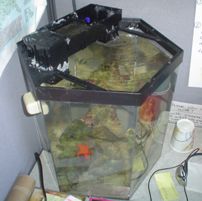
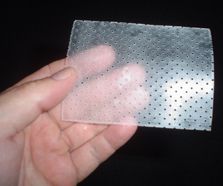
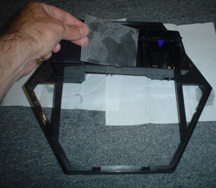
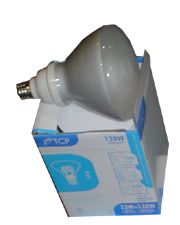
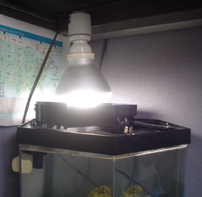
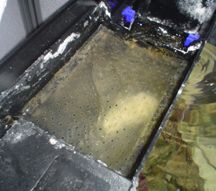
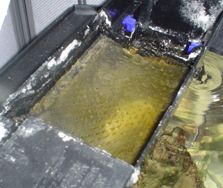
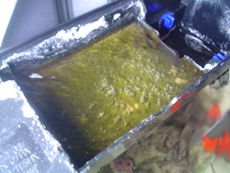
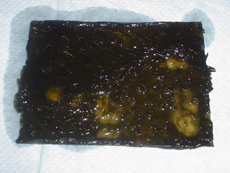
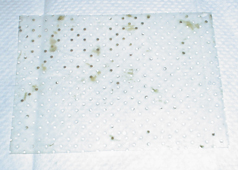
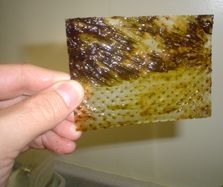
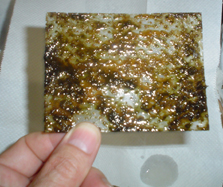
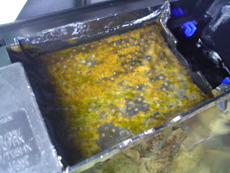
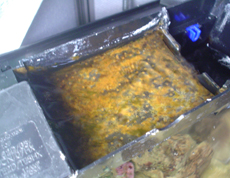
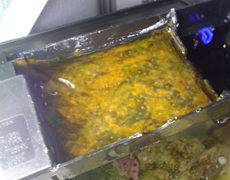
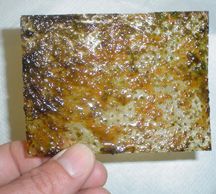
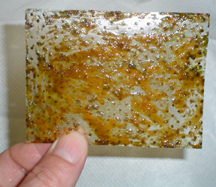
 ) The OP said carbon reduced N and P,which means Nitrogen and Phosphorus not nitrate and phosphate which is what he meant(carbon doesn't do this by the way)
) The OP said carbon reduced N and P,which means Nitrogen and Phosphorus not nitrate and phosphate which is what he meant(carbon doesn't do this by the way)
 I didn't suggest you thought carbon reduced nitrates or phosphates, that was the OP!
I didn't suggest you thought carbon reduced nitrates or phosphates, that was the OP!